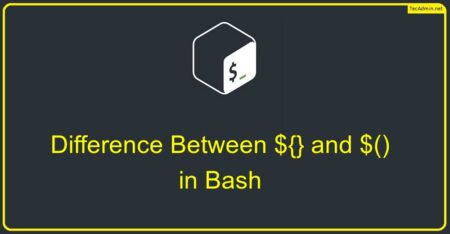The ‘-lt’ operator in Bash is a key component of the Bash scripting language, which is the default shell for many Linux and Unix systems. In this comprehensive guide, we will explore the basics of the ‘-lt’ operator, its usage in various scripting scenarios, and best practices to enhance your Bash scripting skills.
1. The Basics of the -lt Operator in Bash
The ‘-lt’ operator is a test operator in Bash that stands for “less than”. It is used to compare two integer values and returns true if the first value is less than the second value. This operator is a part of a larger set of comparison operators in Bash that includes ‘-gt’ (greater than), ‘-le’ (less than or equal to), ‘-ge’ (greater than or equal to), ‘-eq’ (equal to), and ‘-ne’ (not equal to).
2. Syntax and Usage of the -lt Operator
The syntax for using the ‘-lt’ operator is as follows:
if [ VALUE1 -lt VALUE2 ]
then
# Code block to execute if the condition is true
fi
Where VALUE1 and VALUE2 are integer values or variables containing integer values. The code block only executed if the value of VALUE1 is less than value of VALUE2.
3. Examples of Using the -lt Operator in Bash
Here are a few examples to help you understand the usage of the ‘-lt’ operator in Bash scripts:
Example 1: Comparing two integer values
#!/bin/bash
if [ 10 -lt 20 ]
then
echo "10 is less than 20."
fi
Example 2: Comparing two variables containing integer values
#!/bin/bash
a=5
b=8
if [ $a -lt $b ]
then
echo "$a is less than $b."
fi
Example 3: Using the ‘-lt’ operator in a loop
#!/bin/bash
for i in {1..10}
do
if [ $i -lt 6 ]
then
echo "$i is less than 6."
fi
done
4. Best Practices
- Always use double square brackets ([[ and ]]) instead of single square brackets ([ and ]) for conditional expressions to avoid potential errors and allow for more advanced pattern matching.
- Ensure that the variables being compared contain integer values. If they contain strings or other data types, the comparison may produce incorrect results or lead to errors.
- Use meaningful variable names to make your script more readable and easier to maintain.
Conclusion
The ‘-lt’ operator is an essential component of Bash scripting that allows you to compare two integer values and execute code blocks based on the result. By understanding its syntax and usage, as well as following best practices, you can create more efficient and effective Bash scripts. Keep experimenting with different scripting scenarios to build your confidence and mastery of the ‘-lt’ operator and Bash scripting as a whole.

